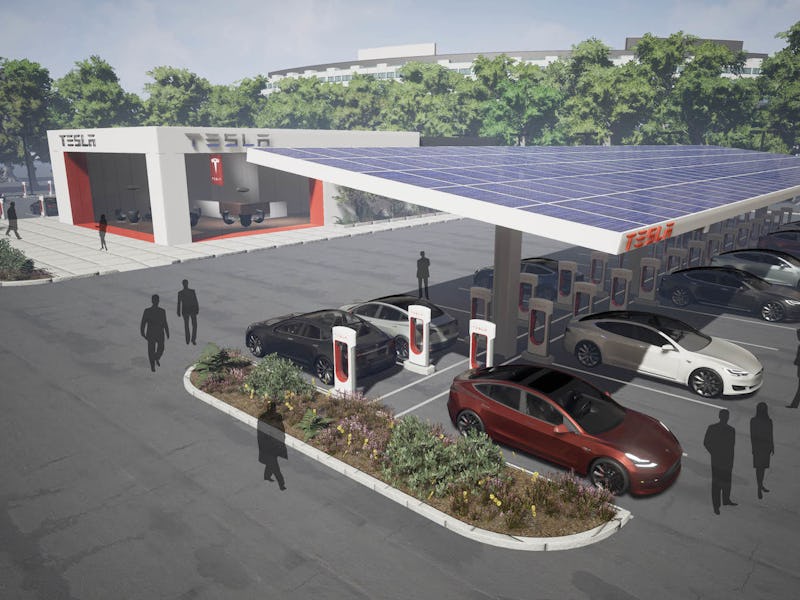On Tuesday, Elon Musk announced on Twitter that Tesla’s supercharger network has expanded to encompass (almost) the entire United States, as well as many parts of the rest of the world.
“You can now drive anywhere in the US (except N Alaska), most of Europe, China & Japan using the Tesla Supercharger network!” he tweeted.
Most Tesla owners have a home charger, but these stations allow them to refill on the road, and they work more quickly than personal chargers: The superchargers add 170 miles of range in 30 minutes, whereas a home wall charger can often only add around 26 miles in that time.
In his tweet, Musk refers to the distance between these stations and whether or not a Tesla vehicle’s range enables drivers to get between them. He calls Alaska the only inaccessible place within the United States, which is corroborated by the company’s updated map showing the stations that are currently open around the world.
There are no superchargers in Alaska. Driving between the relatively close Canadian “Golden Supercharger” in British Columbia and Alaska’s capital city of Juneau (which isn’t even in the northern part of the state) involves some 1,500 miles on the road. Even the highest Model S upgrade only has a range of 335 miles, so without superchargers along the route, there’s no way a driver could make it.
Actually, there don’t appear to be any superchargers in Canada that could successfully bring a driver to the Alaskan border, so Musk seems to be exaggerating just a little by suggesting that only the northern part of the state is unreachable. But this is still quite a milestone.
Map provided by Tesla of current supercharger locations in the United States.
Tesla has so far opened 889 supercharger stations with 5,958 superchargers but plans to have as many as 10,000 superchargers by the end of the year to satisfy the expected spike in demand when deliveries begin for the highly-anticipated Model 3.
With fairly low costs — every Tesla owner receives 400 kilowatt-hour (kWh) credits of free charging per year, the rough equivalent of 1,000 miles — and with an extensive, rapidly-expanding network, these superchargers have so far been a success.
Now, if Tesla could just make them work a bit faster.
